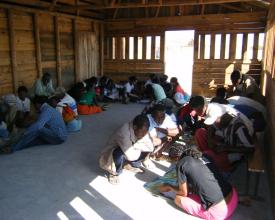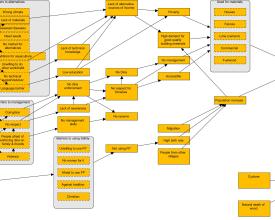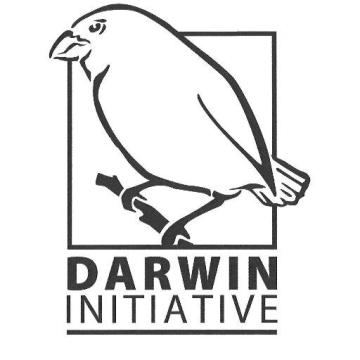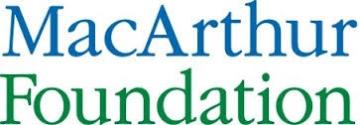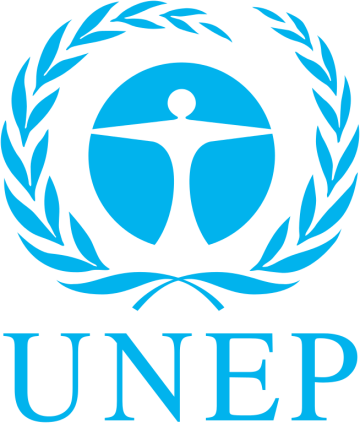
Une approche participative et incitative de la conservation des mangroves

Blue Ventures utilise une approche participative de surveillance et de gestion pour lutter contre la dégradation et la déforestation des mangroves dans la baie des Assassins, au sud de l'aire marine gérée localement (AMGL) de Velondriake. Cette approche utilise la génération de crédits carbone, qui peuvent à leur tour générer un financement durable pour les résidents de la baie des Assassins et le comité de gestion de Velondriake.
Contexte
Défis à relever
Bien qu'elles constituent un habitat essentiel pour la biodiversité marine menacée et une source vitale de nourriture et de revenus pour des millions de personnes vivant sur les côtes malgaches, les forêts de mangroves de Madagascar et les pêcheries qu'elles soutiennent sont en danger. La dégradation et la déforestation généralisées des mangroves sont dues à la surexploitation des ressources en bois pour la construction et à des fins commerciales (production de chaux, de charbon de bois et de bois d'œuvre).
Emplacement
Traiter
Résumé du processus
Blocs de construction
Cartographie participative pour la gestion
Une cartographie participative est entreprise avec les communautés pour comprendre les schémas spatiaux (utilisation des terres, régime foncier, type d'occupation des sols, changements et tendances historiques) et l'état et l'utilisation des ressources de la mangrove dans la zone du projet. L'imagerie Google Earth couvrant l'ensemble de la zone d'intérêt (AOI), combinée à des questionnaires, est utilisée pour évaluer la perception de l'utilisation des ressources par la communauté. Toutes les parties prenantes (agriculteurs, bûcherons, collecteurs de bois de chauffage, producteurs de charbon de bois, fabricants de chaux, anciens et pêcheurs), identifiées lors des entretiens avec les informateurs clés, sont impliquées dans cet exercice et une carte de l'utilisation des ressources de la zone d'intérêt est créée. Ils sont divisés en groupes d'activités et le nombre de personnes par groupe doit être d'au moins 5. Une seule personne est désignée dans le groupe pour dessiner les limites de chaque type d'utilisation des terres sur la carte. Idéalement, chaque groupe devrait être assisté par un membre du personnel de l'organisation de soutien. Chaque groupe est composé de personnes de sexe et d'âge différents (hommes et femmes/jeunes et vieux) qui sont déjà actives dans les activités respectives (généralement plus de 15 ans).
Facteurs favorables
- Une carte Google Earth à haute résolution de la zone est disponible et contient des points de repère familiers (par exemple, un bâtiment scolaire, une église) afin de faciliter la lecture par la communauté.
- Les questionnaires destinés aux parties prenantes et visant à recueillir des informations supplémentaires sur l'utilisation des ressources sont disponibles et traduits dans le dialecte local afin d'éviter toute confusion.
Leçon apprise
- Assurez-vous que le village est informé à l'avance et il serait préférable de vérifier auprès de la communauté le moment qui lui convient pour entreprendre l'exercice (marée de mortes-eaux lorsqu'ils ne vont pas à la pêche ou marée de printemps lorsqu'ils reviennent de la pêche) ;
- L'exercice de cartographie devrait durer entre 2 et 3 heures pour s'assurer que les parties prenantes se concentrent sur les activités.
- Le personnel de l'organisation de soutien doit être familiarisé avec le dialecte local et éviter d'utiliser des termes scientifiques/très techniques.
- Le consensus entre les groupes doit être respecté avant de tracer les limites sur la carte.
- Le facilitateur doit être en mesure d'analyser rapidement les informations fournies par la communauté au cours de l'exercice.
Théorie participative du changement
- L'exercice participatif d'élaboration d'un modèle conceptuel et d'une stratégie vise à identifier les moteurs et les causes sous-jacentes de la disparition des mangroves, ainsi que les stratégies/solutions potentielles qui pourraient être mises en œuvre pour réduire les menaces qui pèsent sur les mangroves et promouvoir leur utilisation durable.
- À la fin de l'exercice, la communauté a élaboré un modèle conceptuel. Ce modèle décrit les facteurs de perte de la mangrove dans leur communauté et les autres facteurs qui contribuent à cette perte.
- Ils identifient une ou plusieurs solution(s) et travaillent sur les activités qu'ils doivent mettre en œuvre pour atteindre les résultats souhaités grâce à une théorie du changement (TdC).
- L'exercice est réalisé avec les membres de la communauté dans le cadre d'un groupe de discussion. L'élaboration du modèle conceptuel et de la TdC est réalisée à l'aide de papier et de craies de différentes couleurs.
- Après les réunions participatives, le modèle conceptuel final avec l'évaluation des menaces et les modèles de TdC sont numérisés à l'aide du logiciel MiradiTM (2013).
Facteurs favorables
- L'annonce de la planification est envoyée au chef du village avant l'exercice ;
- Une forte participation et la présence de toutes les parties prenantes pendant l'exercice et les participants doivent être pleinement conscients de l'objectif de l'exercice ;
- Le facilitateur de l'organisation de soutien a suffisamment de compétences et est familier avec l'exercice du modèle conceptuel et capable de motiver les gens à exprimer leurs idées ;
- L'organisation de soutien est capable de s'adapter au contexte local (en utilisant le matériel disponible).
Leçon apprise
Pour faire face aux réticences de la communauté et améliorer le dialogue entre les membres de la communauté, il est recommandé d'employer deux facilitateurs communautaires du village pour aider à l'exercice de la théorie du changement. Il est préférable d'embaucher des personnes déjà engagées dans les activités de gestion de l'EMMT (comité d'application du dina, commission de la mangrove, groupe de femmes). Les facilitateurs communautaires sont formés par le personnel technique de l'organisation de soutien un jour avant l'exercice participatif de la théorie du changement. Les volontaires de la communauté doivent être invités à présenter les résultats de leur travail de groupe, afin d'évaluer le niveau d'adhésion de la communauté au modèle conceptuel qu'ils ont élaboré. Il est essentiel d'assurer la représentation des principaux groupes de parties prenantes, ainsi que des femmes et des jeunes qui pourraient être marginalisés. Si nécessaire, séparez les hommes et les femmes dans des groupes différents pour faciliter une discussion ouverte.
Ressources
Plan de gestion forestière participative
- Le plan de gestion participatif a pour but d'aider la communauté locale à gérer durablement la forêt de mangrove au sein de la LMMA.
- À l'aide d'une carte Google Earth imprimée à haute résolution, un premier projet de plan de gestion est créé par chaque village concerné (zone proposée pour le projet de carbone de mangrove) avec les limites du zonage de la mangrove (zone centrale, zone de reboisement et zone d'exploitation forestière durable).
- Lorsque tous les villages concernés au sein de la LMMA ont terminé le zonage, les données de la carte Google Earth sont numérisées et projetées sur un grand écran pour validation. Des délégués de chaque village sont invités à participer à un atelier de validation du zonage de la mangrove. Pour la validation, au moins quatre personnes de chaque village concerné doivent être présentes. Idéalement, les hommes et les femmes sont élus par les villageois qui, selon eux, reflètent le mieux leurs opinions (anciens, chef de village).
- Chaque communauté détermine, approuve et met en œuvre les règles et réglementations régissant chaque zone de mangrove.
- Ce processus se déroule lors d'une grande réunion villageoise. L'organisation de soutien facilite le processus jusqu'à ce que la loi locale soit ratifiée par le tribunal.
Facteurs favorables
- Une convention ou une loi locale permet aux communautés de régir la gestion des ressources naturelles ;
- Aptitude de l'organisation de soutien à intégrer le plan de gestion de la mangrove dans le plan de gestion existant de l'EMMT ;
- Capacité du comité d'application de la loi à faire respecter le Dina et à s'occuper du paiement des amendes dans leur zone respective sans l'appui/les intrants du gouvernement ;
- La délimitation de la zone de gestion permet à la communauté d'observer sur le terrain les limites du zonage de la mangrove.
Leçon apprise
- L'organisation de soutien doit connaître la législation gouvernementale, car les lois/conventions locales (telles que le Dina) ne doivent pas être en conflit avec la législation nationale. Il s'est avéré efficace d'impliquer les acteurs gouvernementaux appropriés dans le traitement du Dina (loi locale) au niveau du village afin de faciliter la ratification.
- Veiller à ce que les villages partageant la forêt de mangrove soient consultés par le biais d'une réunion ou d'un atelier villageois afin de parvenir à un compromis sur le zonage de la mangrove. Pour la démarcation dans la forêt, le délégué du village de l'AOI doit aider le technicien de l'organisation de soutien à s'assurer que les marques/signes sont au bon endroit.
- La couleur des marques/signes utilisés pour la démarcation doit être cohérente avec celle de l'EMMT (par exemple, la couleur rouge pour la limite de la zone centrale de l'aire marine et de la forêt de mangrove).
Suivi participatif
- Le suivi participatif vise à développer une meilleure compréhension de la santé des ressources naturelles et des impacts des activités anthropogéniques au sein des communautés locales par le biais d'une évaluation des ressources socialement intégrée.
- Le processus de suivi écologique participatif commence par une réunion initiale du village afin d'informer de l'objectif des activités, de sélectionner les espèces indicatrices, les sites de suivi et une équipe de suivi local.
- Les équipes de surveillance locales sont désignées ou élues par les membres de la communauté au niveau du village ou peuvent être des bénévoles. Cependant, ils doivent au moins savoir lire/écrire et compter. Une équipe de suivi local est composée de cinq personnes par village et comprend des hommes et des femmes.
- La méthode de suivi est développée par l'organisation de soutien et le suivi a une conception et une méthode simples pour être accessible à tous, quel que soit le niveau d'éducation (en utilisant un simple comptage des souches coupées pour évaluer la quantité de perte de carbone ; en mesurant la hauteur de l'arbre avec des perches graduées pour mesurer la biomasse de l'arbre et le carbone).
- Les observateurs locaux ont été formés à la méthode par le personnel technique de l'organisation de soutien avant de mener le travail sur le terrain.
Facteurs favorables
- L'organisation de soutien aide la communauté à identifier les indicateurs pertinents, qui devraient être les ressources naturelles clés ou les espèces cibles fournissant des informations utiles pour permettre à la communauté locale de percevoir l'efficacité de la gestion en place ;
- L'organisation de soutien fournit une assistance technique pour le suivi à long terme et renforce les capacités des observateurs locaux.
Leçon apprise
- La méthode de suivi mise au point doit être un moyen efficace d'illustrer aux communautés côtières les avantages de la gestion des ressources naturelles. Le nombre de souches coupées ou le nombre de trous de crabe dans la boue de la mangrove pourrait être un bon indicateur pour démontrer clairement à la communauté l'efficacité de la gestion de la mangrove.
- La diffusion des résultats du suivi aide la communauté à comprendre l'état de ses ressources et l'importance des stocks de carbone dans sa forêt de mangrove. L'organisation de soutien doit définir les messages clés des résultats du suivi (les stocks de carbone dans la réserve de mangrove sont beaucoup plus élevés que dans la forêt de mangrove non gérée).
- L'équipe locale de surveillance n'est pas rémunérée, mais elle reçoit une indemnité journalière lorsqu'elle procède à l'inventaire forestier et à la surveillance du carbone. Les revenus provenant de la vente du crédit carbone sont prévus pour garantir les activités de suivi à long terme.
Reboisement des mangroves par les communautés
- Le reboisement des mangroves dans des zones précédemment déboisées ou dégradées contribue à améliorer la santé des mangroves et à accroître les services fournis par les écosystèmes de mangrove.
- La zone de reboisement est identifiée par la communauté locale lors du zonage participatif de la mangrove.
- Pour les espèces de mangrove vivipares (produisant des graines qui germent sur la plante) (par exemple Rhizophora spp), le reboisement est entrepris par le biais de propagules et pour les espèces de mangrove non vivipares (par exemple Avicennia marina, Sonneratia alba) par le biais de l'établissement de pépinières. La densité doit être d'une propagule/plante par mètre carré afin de s'assurer qu'elles disposent de suffisamment d'espace pour se développer correctement.
- Le suivi de la replantation a lieu trois à quatre mois après la replantation. Le nombre de plantes vivantes/mortes dans la parcelle d'échantillonnage est évalué. Le nombre de parcelles d'échantillonnage (5mx5m) dépend de la taille de la zone replantée, mais au moins trois répétitions doivent être effectuées. Les membres de la communauté sont impliqués dans les activités de suivi.
Facteurs favorables
- La zone de reboisement est identifiée par la communauté au cours du processus de zonage participatif et la plantation a lieu lorsque les graines/plants de mangrove sont disponibles (en fonction de la saison de fructification).
- Le personnel technique apporte son soutien à la communauté locale pour le reboisement de la mangrove (il connaît l'écologie et l'adaptation de la mangrove) ;
- Les propagules sont récoltées et sélectionnées un jour avant la replantation, car il arrive qu'elles ne soient pas disponibles à proximité du site où la replantation a lieu.
Leçon apprise
- Le meilleur moment pour la replantation de la mangrove doit être vérifié/décidé avec les membres de la communauté à l'avance et doit avoir lieu à marée basse pendant la marée de printemps.
- Il est essentiel de promouvoir le reboisement volontaire de la mangrove pour s'assurer qu'il puisse se poursuivre sans soutien financier extérieur. Une motivation en nature (rafraîchissements et biscuits) pourrait être donnée aux participants lorsque les activités sont terminées afin d'éviter qu'ils ne demandent de l'argent. Les recettes provenant du paiement du carbone peuvent constituer une source de financement pour le reboisement à long terme.
- Si les propagules ne sont pas disponibles à proximité du lieu de replantation, elles peuvent être collectées ailleurs.
- Le suivi du reboisement permet d'évaluer le taux de survie de la replantation de la mangrove. Les membres de la communauté sont impliqués dans les activités de suivi afin de leur permettre de se rendre compte de l'impact qu'ils ont et de maintenir leur enthousiasme pour la replantation.
Impacts
- Le zonage participatif des mangroves a permis de placer 830 ha sous une protection stricte contre l'exploitation des mangroves afin d'augmenter les stocks de carbone.
- 1877 ha de mangrove sont exploités par la communauté dans le cadre d'un régime d'exploitation contrôlé.
- 1095 ha de mangrove sont désignés pour être replantés par des groupes communautaires dans la zone du projet. Les groupes communautaires (producteurs d'algues, club de jeunes, écoliers et association de femmes) ont replanté 12 ha de mangrove dégradée à ce jour.
Bénéficiaires
Communauté côtière et communauté dépendant de la mangrove.

